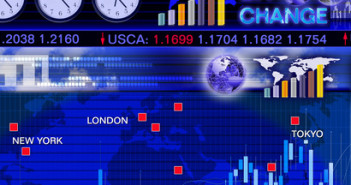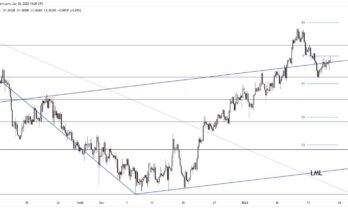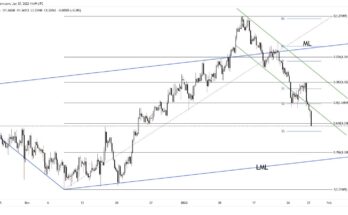Across the global financial markets, investors are looking the gift horse in the mouth this morning. After a string of disappointing earnings releases from major US retailers and banks, traders have adopted a more cautious stance, sending the US dollar up on a trade-weighted basis. The Australian dollar remains on the defensive after Thursday’s appalling unemployment report, holding below the 88 cent threshold against the greenback. Traders are now on rate cut watch, expecting the Reserve Bank of Australia to reduce benchmark yields in the next six months. Commodities like gold and oil are seeing modest gains, while industrial metals remain soft.
On the other side of the world, currency markets are seeing some sharp shifts. The pound jumped the most in a month overnight after a government report illustrated a 2.6% rise in December retail sales – the strongest performance recorded since at least 1996. The euro is also on the rebound, with European shares hitting five-year highs as a rally in the peripheral economies gains traction.
Although the dollar-euro interest rate differential remains low and stable, liquidity is falling across the common currency area as LTRO repayments, reduced repo operations, and rising corporate demand soak up excess funding. This is driving a modest rise in yields, particularly relative to the United States – where investors are increasingly convinced that the Federal Reserve’s tapering-is-not-tightening approach is credible. Long euro positions are generating revenue for the first time in years.
For the Canadian dollar, the short-term trading dynamics are much more interesting. Behavioural psychologists have long observed that market participants tend to anchor price expectations around large round numbers. Over the past few years, 1.0000 exerted gravitational force on market participants. The exchange rate traded within a 300 basis point range for prolonged periods of time – despite there being little fundamental reason for this to be the case.
Simplistic though it may seem, 1.10 has now supplanted par’s role in the collective imagination. In boardrooms across the country, exporters are discussing ways to lock in gains above this level. Importers are in panic mode, trying to stanch the bleeding near the same mark. Traders on both sides of the market are placing orders to capitalize on the shifts underway.
Because of this, massive support and resistance levels have built up. With stops, limit orders, and option barriers clustered around the round number, the exchange rate has now entered “sticky†territory, repeatedly failing to break through into the 1.10’s.
There are significant implications for commercial hedgers. For exporters, a break higher is not a foregone conclusion, meaning that they should consider locking in some gains by tranching forward and options positions in below the 1.10 mark. For importers, waiting until the clock strikes midnight could be extraordinarily painful – in the event of a decisive break through the 1.0975 area, the move will likely be too swift to react to on a real-time basis. Instead, stops and option floors closer to the 1.0900 mark should be considered.
Further reading:Â ECB in full control



